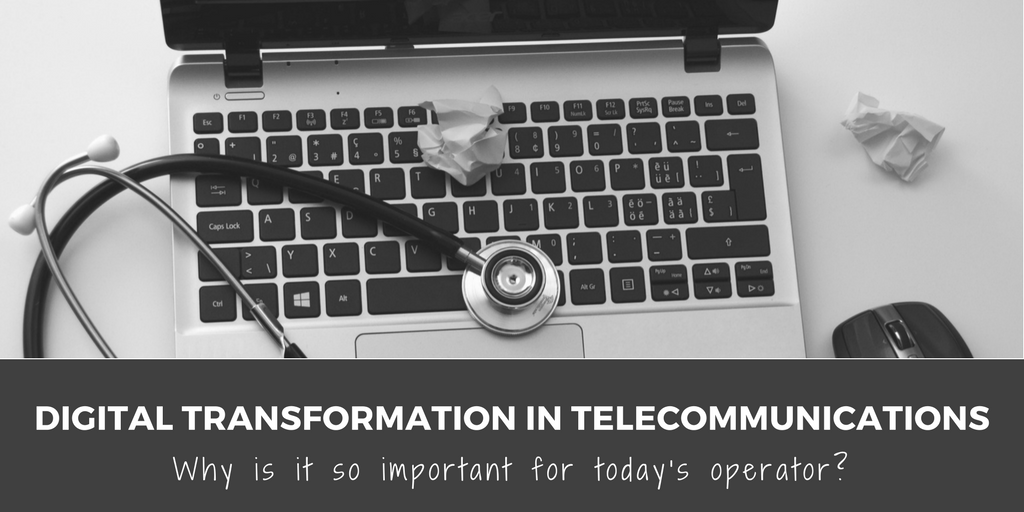How to get the maximum benefit from your unique position? How not to fade into the background, becoming a “pipe” and turning into a secondary intermediary? In the era of digital transformation, communication operators are faced with this important issue. Many companies from different industries are exploring the possibility of using innovative technologies. Some of them are clouds, mobile applications, and analysis of large data for the introduction of new ways and mechanisms of interaction with end-users.

Why Is Digital Transformation So Important?
Telecom operators are at the heart of the digital value chain. Various organizations from different industries rely on their communication networks and computing power. Mostly because it helps them to implement critical components of their services. Telecom operators need to compete effectively with new, fully digital companies that wrap up and destroy the traditional markets. From this perspective, it is entirely necessary for the telecoms operator to learn how to use digitalization capabilities. It is already the part of their customer service package and revenue channel.
It often happens that the operator’s own IT infrastructure is not keeping pace with the development of related technologies. In order to effectively serve corporate customers, one has to keep up with digital transformation. It is at this point that the transition to software-defined virtualized architectures becomes inevitable. At the same time, not only are technologies changing, but also the economy and the dynamics of the industry. The very nature of competition between providers is changing.
Previously, large network equipment manufacturers offered disconnected vertically integrated solutions, and telecom operators combined them into a single system. Today, virtualization of network functions opens up access to the market for many new players. It also allows operators to flexibly select partners in each specific situation. With the elimination of a rigid connection between “software” and “hardware” elements, solutions with an open API come to the fore. These solutions provide new opportunities for collaboration within open projects for telecoms operators and IT software developers and providers.
Open Ecosystems
Today the world is on the threshold of an era of open telecom companies, based on open ecosystems. As we have seen in other industries, such a transition will help operators accelerate the introduction of innovations. Also, it will reduce costs and respond more dynamically to new competitive challenges. But to take advantage of the benefits of open source products, you need to be able to navigate the ecosystem: to understand the difference between a project that is developed by the community and a corporate class solution that is built on it. It is necessary to understand how certification of technologies that work with other software and hardware solutions is performed. It is important to realize the risks of dependency (lock-in) and incompatibility arising from the use of proprietary (forked) versions of open source software products. Some companies have advanced further than others in this new market opportunity.
Flexibility, Dynamism, and Scalability
Some of the most advanced cloud products of telecom operators already include industry solutions that support integration with existing applications and custom software systems. For example, T-Systems, owned by Deutsche Telekom, offers cloud services for embedding in client “vertical” solutions. Probably the earliest of all we will see the use of such services in the field of the Internet of Things. For example, in logistics, they can use it to monitor the condition of the vehicle fleet based on IoT-sensor data. Another example of use is in retail, for marketing mailings to phones near sales points or for analytics of data on a customer visit. Today it is obvious that the success of a telecom operator in the digital age is impossible without the flexibility, dynamism, and scalability of its ICT ecosystem. This is what network virtualization (NFV) promises and software-defined networks (SDNs).
The leaders of the telecom industry should modernize. They need to avoid the negative impact of digitalization on business efficiency and network performance. Operators should not just innovate, but also do so at “internet speeds”, boldly getting rid of the obsolete legacy models. Also, they should dynamically react to how customers use new technologies and interact with each other. It is this mixture of change, innovation, and competition that will pave the way for an open and cooperative approach that changes the way we grow our operations.
Get Service, Support, and Professional Advice
For general and sales inquiries regarding JeraSoft billing solutions, please contact the Sales Team at sales@jerasoft.net or use the form and a team member will get back to you as soon as possible.
Please contact JeraSoft Support for any product or support related questions at support@jerasoft.net or visit JeraSoft Documentation.